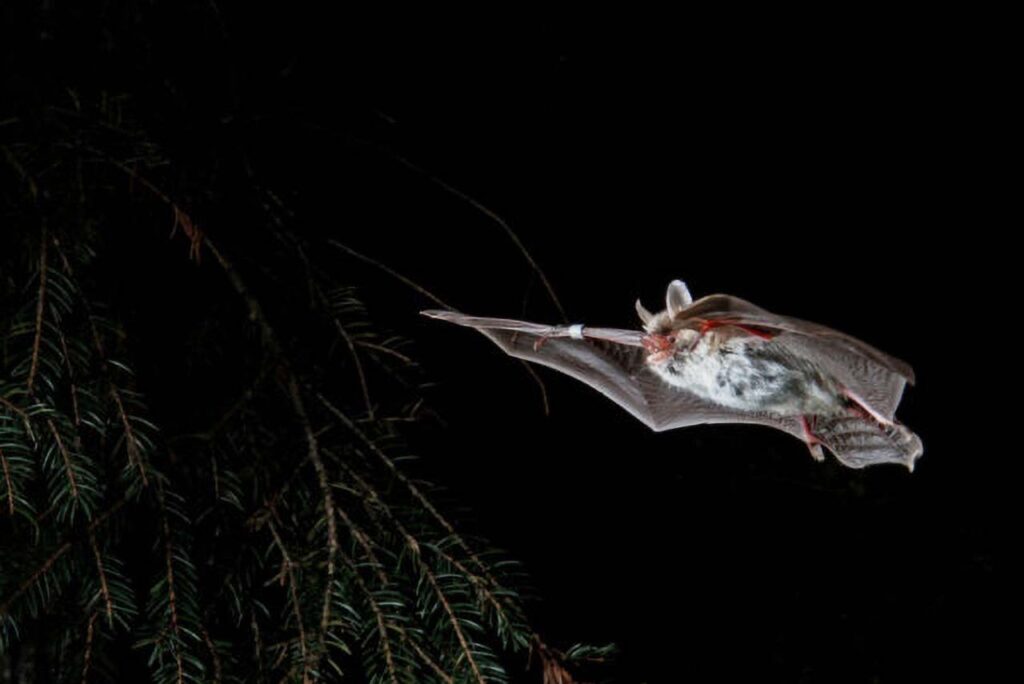New fungal pathogen threatens bats
An international team led by scientists at the University of Montpellier, in collaboration with CNRS scientists and partners in Germany, Bulgaria, Finland and Ukraine, has analyzed a colossal number of samples of the fungus responsible for the largest mammal mortality ever documented. This major project, to which more than 360 volunteers contributed, has been published in the prestigious journal Nature on May 28, 2025. It has revolutionized current understanding of white-nose disease, revealing unprecedented insights into the identity and diversity of the pathogens involved.

Diseases don't just strike humans: in 2006-2007, an unexplained mass mortality of bats was observed in a cave in New York State. The animals had a white powder on their snouts, caused by a then-unknown fungus, Pseudogymnoascus destructans. This fungal disease, known as "white-nose disease", spread rapidly across North America, decimating hibernating populations with annual mortality rates exceeding 90%, and causing the death of several million bats. Researchers discovered that the fungus originated in Eurasia, where it coexists with local bats without causing mass mortalities. Its accidental introduction into North America triggered one of the most devastating epidemics ever documented in wild mammals.
For almost 20 years, the history of this pathogen was thought to be relatively straightforward: a single agent, an identified geographical origin (Europe), and well-established mechanisms. But new genetic data reveal a far more complex story, calling into question our certainties about the origin, diversity and evolutionary dynamics of this fungal pathogen.
Not one, but two species of fungi cause the disease
Until recently, Pseudogymnoascus destructans was considered the sole agent responsible for white-nose disease. However, this study, based on the analysis of an impressive number of samples (5,479) from 27 countries and three continents, highlights the existence of two distinct species of fungi capable of causing the disease, although only one of the two species has been introduced into North America. This discovery calls into question the idea of a single pathogen and reveals the complexity of the disease's dynamics. It opens up new perspectives on the evolution of virulence and the way in which these pathogens interact with their hosts in different geographical contexts.
"We thought we knew our enemy, but we're now discovering that he's twofold, and potentially more complex than we imagined," sums up Nicola Fischer, first author of the work, who carried out her PhD on the subject between the University of Greifswald in Germany and the University of Montpellier.
The discovery of a second pathogenic fungus, capable of causing white-nose disease and presenting a different host specialization, represents a considerable risk for bat conservation. Although the second species is currently absent from North America, its introduction could threaten bat species that have not yet been affected by the first. What's more, even bat species that are beginning to recover from exposure to the first pathogen could face new challenges if the second were to spread. This situation is reminiscent of the example of chytrid fungi that devastated amphibian populations, where the emergence of a second, more specialized species after a first generalist species had devastating effects. In the case of the second species of P. destructans, it is still possible to take preventive action to strengthen global biosecurity and limit the risks associated with this new threat.
The origin of the North American introduction finally clarified
In Eurasia, both species of fungus are already present, but fungal populations are highly structured geographically. The main risk lies in the rapprochement, often induced by human activities, of previously isolated populations. This could lead to genetic recombination within the same species, a well-known fungal mechanism for generating new, sometimes more virulent variants. Such an emergence would represent a serious threat to Eurasian bats, even if they do not appear to have been affected to date.
Thanks to the genetic analysis of over 5,400 samples collected across Eurasia and North America, the study identifies for the first time the precise region of origin of the lineage responsible for the North American white-nose epidemic: the Podillia region of Ukraine. Home to some of the world's most extensive cave systems, this area has been a popular destination for international cavers, particularly North Americans, since the end of the Soviet Union. The results suggest that the accidental introduction of the fungus into North America, probably via exchanges with cave explorers in New York State, where the disease was first detected, originated from a single event. This work puts an end to almost two decades of speculation on the origin of white-nose disease across the Atlantic, and vividly illustrates the impact that a single translocation event can have on wildlife.
Caving and biosafety: a crucial challenge for disease prevention
This discovery highlights the major risks posed by caving activities for the dispersal of pathogens, and underlines the urgent need for a better understanding of the "biological pollution" associated with human travel. Preventing the unintentional transport of pathogenic fungi such as Pseudogymnoascus destructans must become a priority in conservation and health management strategies, for both wildlife and humans. Systematic and rigorous cleaning of caving equipment during trips is an essential measure: studies show that it drastically reduces the presence of viable spores, thus limiting the spread of the fungus that causes white-nose disease.
This study would not have been possible without an extraordinary level of mobilization. Thanks to a collective effort to collect data from all over the northern hemisphere, involving several hundred volunteers - mostly chiropterologists - the researchers were able to analyze an exceptional dataset.
"This project demonstrates the power of participatory science. Well-trained volunteers in the right network can help generate data of exceptional quality on scales that would otherwise be impossible to achieve," concludes Sébastien Puechmaille, study coordinator at theInstitut des sciences de l'évolution de Montpellier (Isem).